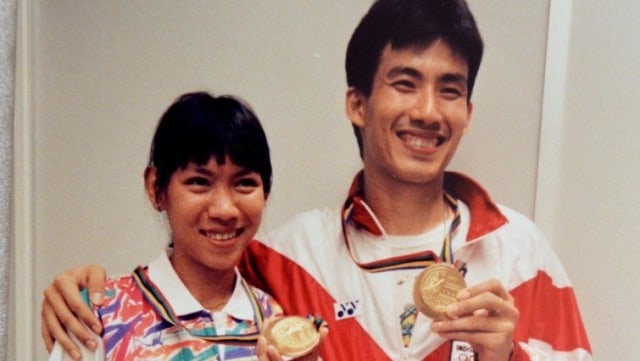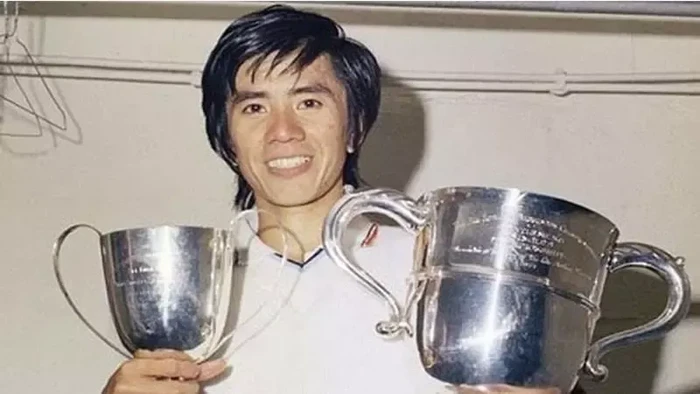Southeast Asia is a region brimming with sporting talent, where passion and perseverance have shaped world-class athletes. Among its many successes, badminton stands out, and no nation embodies this sport's spirit more than Indonesia. With a history of legendary players, record-breaking achievements, and a deep-rooted love for the game, Indonesia has cemented itself as a global badminton powerhouse.
A Legacy of Champions
Indonesia's badminton dominance is no accident. The country has consistently produced world-class players who have left an indelible mark on the sport. Since badminton's Olympic debut in 1992, Indonesia has won 22 out of its 40 Olympic medals in this discipline.
Olympic Glory
The 1992 Barcelona Olympics marked a historic moment when Susi Susanti (women's singles) and Alan Budikusuma (men's singles) secured Indonesia's first-ever Olympic gold medals. This monumental victory not only ignited a national obsession with badminton but also inspired generations of players, instilling a sense of pride and inspiration in the hearts of every Indonesian.

Photo by Kumparan
Indonesia's Olympic success didn't stop there. The nation has claimed gold in every Olympic badminton event except the 2012 London Games. Some of the most iconic victories include:
- 1996 Atlanta: Rexy Mainaky & Ricky Subagja (men's doubles)
- 2004 Athens: Taufik Hidayat (men’s singles)
- 2016 Rio: Tontowi Ahmad & Liliyana Natsir (mixed doubles)
- 2020 Tokyo: Greysia Polii & Apriyani Rahayu (women's doubles)
Most recently, Gregoria Mariska Tunjung added to Indonesia's legacy with a bronze in women's singles at the Paris 2024 Olympics, proving that the nation remains a formidable force.

Photo by detiksport
World Championship Dominance
Beyond the Olympics, Indonesia has shone at the BWF World Championships, winning titles across all disciplines. Legends like Rudy Hartono (eight-time All-England champion) and Susi Susanti (1993 World Champion) have set benchmarks for excellence.
Indonesia also holds an unmatched record in the Thomas Cup (men's team championship), lifting the trophy 14 times which is more than any other nation. The country has also won the Uber Cup (women's team championship) three times, showcasing depth in both men's and women's badminton.

Photo by detikjatim
Strengths and Challenges in Modern Badminton
As of 2024, Indonesia ranks third in the BWF world rankings, maintaining its elite status. However, the road ahead is not without obstacles.
Current Strengths
- Men's Doubles Powerhouse: Indonesia has historically dominated this category, with pairs like Hendra Setiawan & Mohammad Ahsan continuing the tradition.
- Emerging Young Talent: Victories in the 2024 Junior Mixed Team Championships signal a bright future.
- Strong Grassroots Programs: Initiatives like the SenengMinton Festival introduce badminton to children, ensuring a steady talent pipeline.
Areas for Improvement
- Women's and Mixed Doubles: While Indonesia excels in men's events, women's and mixed doubles require more strategic focus.
- Coaching & Sports Science: Some analysts suggest Indonesia could benefit from greater emphasis on physical conditioning and mental resilience training.
- Infrastructure & Funding: Limited resources in some regions hinder talent development, requiring more investment.
The Blueprint for Future Success
Indonesia's commitment to maintaining its badminton supremacy is unwavering, as it adopts modern strategies to ensure a bright future for the sport.
1. Grassroots Development
Programs like SenengMinton and partnerships with private sponsors help nurture young talent. Expanding these initiatives nationwide is crucial.
:strip_icc():format(webp)/kly-media-production/medias/4752510/original/082228100_1708854167-ALL_JUARA.jpg)
Photo by bola.com
2. Advanced Coaching & Technology
PBSI is embracing sports science by using data analytics and wearable technology to monitor and improve player performance. This helps customise training, prevent injuries, and maximise efficiency. Overseas training camps and collaborations with foreign coaches offer valuable exposure to international standards. Together, these innovations are keeping Indonesian athletes sharp and globally competitive.
3. Strengthening Weak Disciplines
Indonesia is focusing on boosting performance in women’s and mixed doubles areas where success has been less consistent. Specialised coaching and targeted training programmes are being implemented to close the gap. Young talents are scouted early and given tailored development paths. The goal is to build a well-rounded team that can excel in every discipline.
4. Government & Private Sector Support
Support from both the government and private sponsors has increased in recent years. Investments are being channelled into better facilities, elite coaching, and athlete welfare. Programmes for youth development and grassroots engagement are also expanding. This strong backing is crucial for ensuring Indonesia’s long-term dominance in badminton.
Conclusion
Indonesia's badminton journey is a story of passion, perseverance, and pride. From Olympic glory to world championships, the nation has repeatedly proven its excellence. While challenges remain, strategic investments in youth development, technology, and infrastructure promise a thriving future.
As Indonesia continues to produce world-class shuttlers, its legacy in badminton and Southeast Asian sports remains unshaken. The next generation of players, inspired by past legends, is ready and eager to soar even higher, promising an exciting future for Indonesian badminton.


















